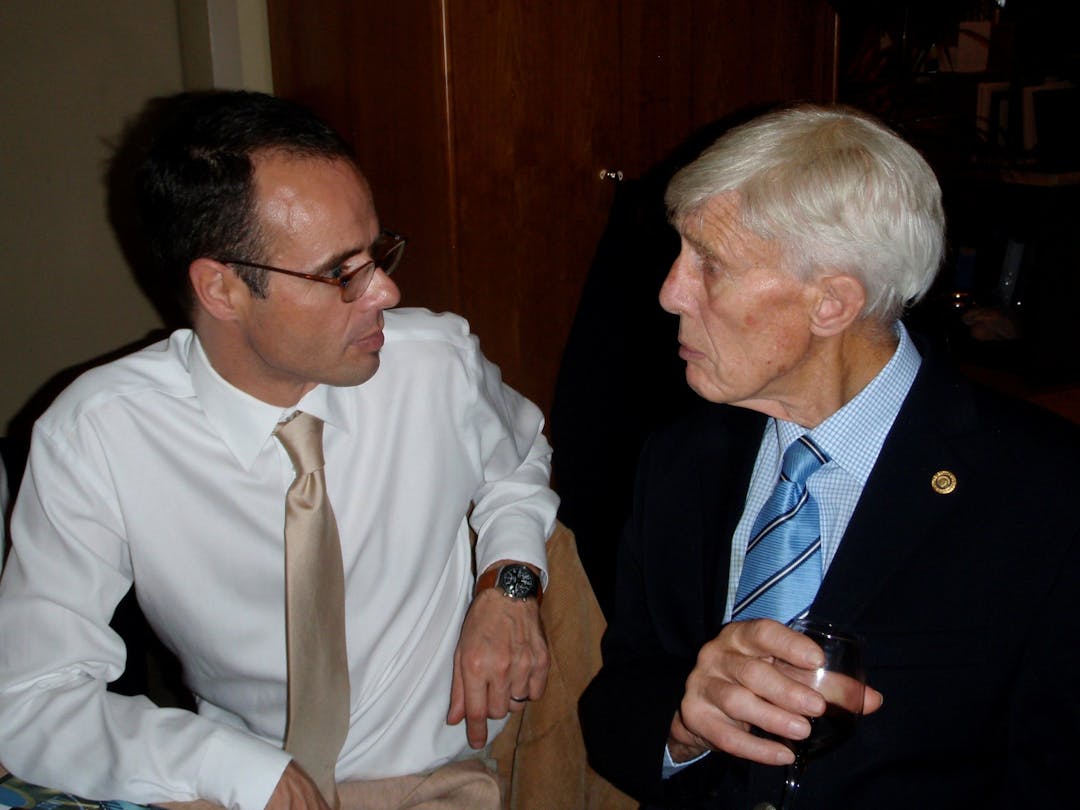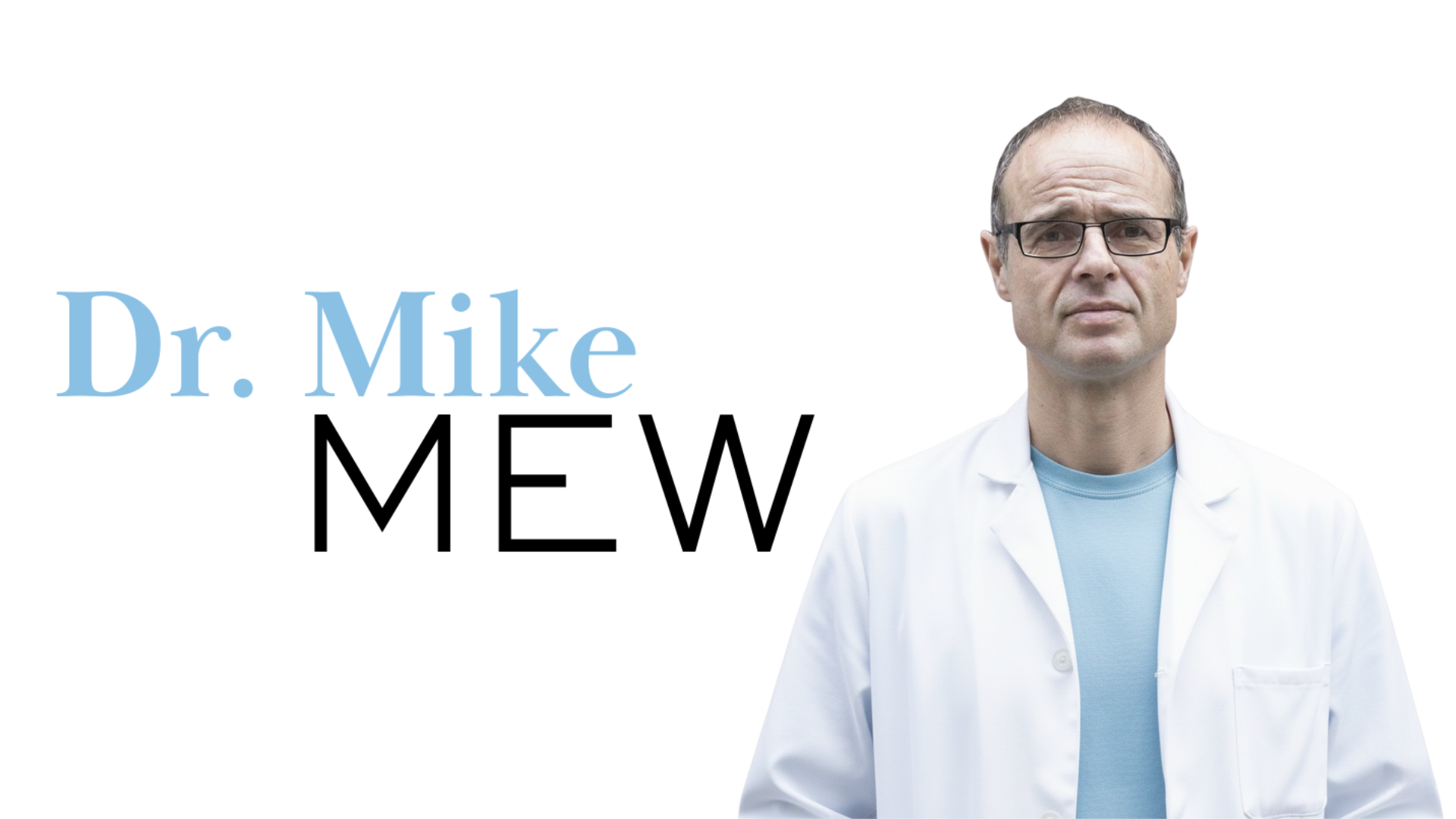Why are teeth crooked—and how might we prevent this?
Mike’s approach to orthodontics blends traditional clinical training with a modern, holistic perspective on health and growth. He completed his master’s degree in orthodontics at Aarhus University in Denmark—then regarded as one of the world’s top programmes for growth and development—where he was particularly influenced by the work of Professor Björk, who identified the fundamental growth patterns of the facial complex
He believes that early, gentle guidance of a child’s facial development can often reduce the need for complex treatment later in life. His work explores the interplay between facial growth, breathing, posture, and overall wellbeing—seeking not only to align teeth but to support function and long-term health.

Dr. Mike Mew (left) with his father, Professor John Mew (right), pioneers of preventive orthodontics.
As an orthodontist, Mike has worked extensively with young patients and families, helping them understand how lifestyle, environment, and daily habits can shape growth. He draws inspiration from his father, Professor John Mew, whose pioneering book The Cause and Cure of Malocclusion examined why modern humans so often lack space for all their teeth. A thousand years ago, our ancestors almost universally had room for 32 teeth; today, most people are fortunate to have space for 28. This dramatic change in jaw size and shape may be linked to more than dental crowding—it likely influences how we breathe, sleep, and even how our faces function.
Mike’s research and clinical curiosity led him to explore facial posture and its role in growth and development. These ideas, when shared online, unexpectedly sparked a global movement—known as “mewing”—as people around the world began discussing and applying the principles of oral posture and facial health, and inevitably, facial appearance.
He continues to advocate for open, evidence-based inquiry into craniofacial growth, drawing attention to peer-reviewed research such as “Jaws: The Story of a Hidden Epidemic” (Kahn & Ehrlich, 2020; PMC7498344), which explores how modern lifestyles may contribute to widespread underdevelopment of the jaws

Today, Mike’s work focuses on helping the next generation of clinicians and parents better understand the environmental factors that shape facial growth.
His aim is to bridge the gap between conventional orthodontics and a new, preventive approach—one grounded in good science, compassion, and common sense. At the same time, he seeks to build bridges within the profession itself: working constructively to make conventional orthodontic methods faster, more effective, and increasingly preventive by addressing the underlying causes of malocclusion.




